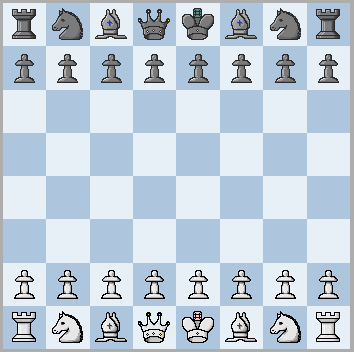

This chess variant first appeared in the Marseille newspaper
“Le Soleil” in 1925. It gained significant popularity
in the late 1930s, attracting renowned grandmasters including
Alexander Alekhine, Richard Réti,
Eugene Znosko-Borovsky, and André Chéron. On each turn,
a player can either move one piece twice or move two different
pieces. A few special rules apply:
1. If a player gives check on the first move, the second move is
forfeited (press the red pass button).
2. The king cannot move into check on the first move and out of
it on the second.
3. It is required to immediately move out of check or shield the
king on the first move.
4. En passant capture must be executed on the first move of a
turn, and only one pawn can be captured en passant per turn (not
two as in Alekhine’s version).
5. To balance the game, White begins with only one move on his
first turn.
6. Specific to this program: When a player has made the first of
his two moves, the other player must press the yellow acknowledge
button. (This is because the program must check if the king is
threatened.)
Comment: While the en passant rule rule differs slightly
from Alekhine’s version, this change has minimal impact.
Either way, this variant bears little resemblance to traditional
chess. To move the queen out early is generally not bad. Checking
the king on the first move is unwise, as it costs the player his
second move. An interesting tactical option is indirect piece
protection: by positioning your king so that capturing your piece
would result in check, you force your opponent to forfeit the
second move if it is captured.
Reference
Marseillais
Chess | Wikipedia
• You can download my free Marseillais
Chess program here (updated
2025-04-08), but you must own the software Zillions of Games to be
able to run it (I recommend the download version).
• Don't miss my other chess variants.
© M. Winther, April 2025.